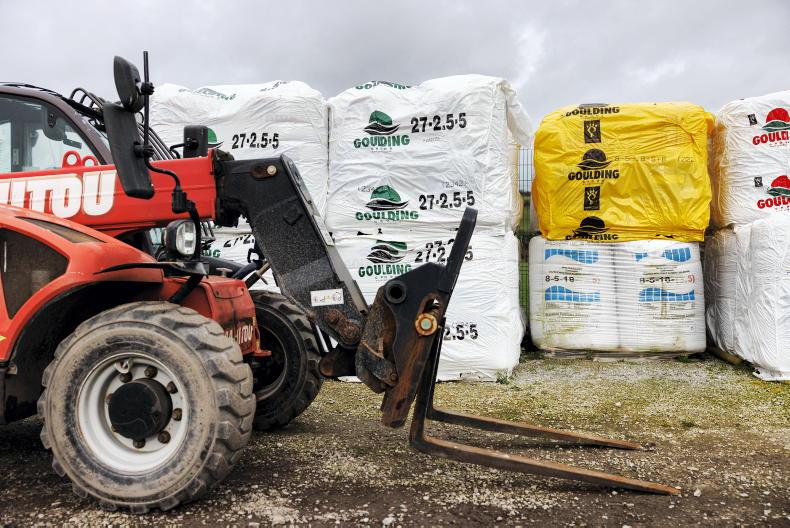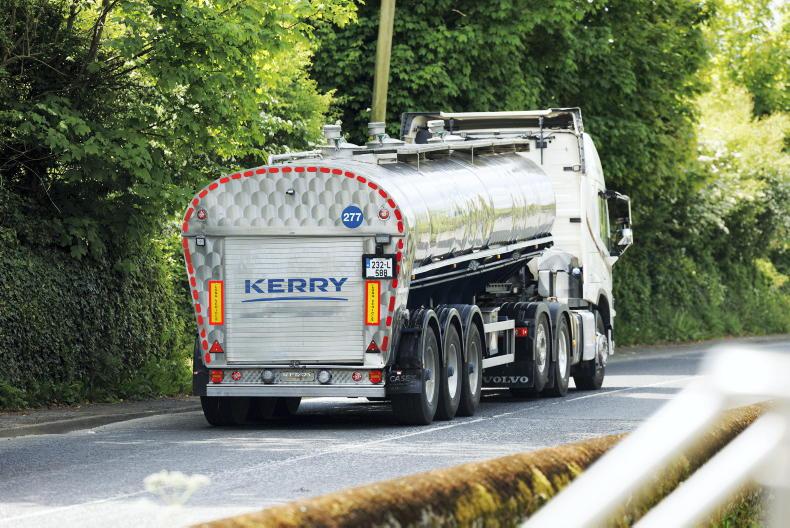Farmers are no strangers to challenging times, from volatile markets to weather extremes to rising costs. It takes a lot of grit, dedication, determination and sacrifice to maintain a sustainable and successful farm business.
Thankfully COVID-19 has not directly impacted farming to the same extent as other sectors, but some farmers may face normal seasonal cashflow pressures. The age-old phrase “cash is king” continues to be as fundamental as ever because without cash, profits are meaningless.
Despite the fact that cash is the fuel that keeps the engine running, many farmers can find themselves not having a true handle on their cashflow. Accurate forecasts enable better evaluation of potential opportunities.

John Farrell, agricultural development manager, north Leinster, at Bank of Ireland.
There are two types of farmers. Those that are really proactive in monitoring their financial positions and have adapted, and are generating good profits. The other type is more reactive and may have aggressively grown the business, invested heavily using cashflow, and is now having a tough time staying on top of expenses. There is hope, and by taking proactive steps cashflow can often improve.
What is cashflow?
It’s basically the movement of money in and out of a farm and ideally it should be tracked monthly or quarterly. By analysing the farm’s cashflow you can ensure that you have enough cash to cover payments. The biggest drivers of net cash on many farms are simply income and expenditure.
However, farming has multiple intertwined components. Proactive monitoring and tracking of technical efficiencies and key performance indicators have a direct correlation with changes in net cash.
Ultimately, gradual progress in areas such as yield per hectare, grass utilisation percentage, average daily liveweight gain or milk solids per hectare will positively impact the overall net cash position.
Profit versus cashflow
Many farmers intermix the terms profit and cashflow. They are not the same. You can't just look at your profit and loss statement (P&L) and get a grip on your cashflow. Profit is simply sales minus expenses.
It is collecting the money on the sale that creates the cash and proactively managing expenses that will preserve that cash.
Expansion
Different stages in the development lifecycle of a farm will demand different cashflow requirements. For example with dairying, investments bring certain expenses ahead of achieving the higher revenue and cashflow that comes with additional cows and successful growth. Knowing the cash outlays in advance allows suitable funding to be put in place. For many farms that have expanded they continue to operate using historic working capital facilities which were adequate for the previous scale but insufficient for increased scale.
Finance options
Finance options that may aid cashflow include the Government’s COVID-19 Credit Guarantee Scheme; the option to retrospectively fund capital expenditure previously undertaken from cashflow onto a term facility; or a seasonal stocking loan.
Ten tips to improve cashflow
1 Maintain a cashflow budget for 12 months: if you can’t measure it, you can’t manage it, so a detailed budget is essential to identify any pressure points.
2 Review working capital facilities: Ensure current facilities are appropriate for the current scale of the business.
3 Tap unused borrowing capacity: You may have to increase debt (eg overdraft) to tide you over.
4 Securing loans – short-term cashflow problems may sometimes necessitate a farm taking out a loan, such as an overdraft facility or seasonal stocking loan.
5 Renegotiate loans, or extend loan terms. Loans could be structured to match the life time of the asset, eg farm buildings could justify a term of up to 15 years.
6 Reduce or delay capital expenditures: Unnecessary machinery or over-spec equipment may be costing more than they are worth.
7 Consider fixing interest rates or product prices. For example forward selling grain or fixing milk prices.
8 Use a contractor. Sometimes it makes sense to use a contractor for certain operations such as silage or harvest rather than owning equipment that spends large parts of the year unused.
9 Just-in-time feed, fertiliser or fuel: When there is plenty of cash, having large stocks of feed, fuel, fertiliser might make sense. But when times are tight, carrying just what you need for the next month or two will lower the carrying costs of that stock.
10 Allocate time for finances: Consider building time into the weekly work schedule to deal with finances.
Start doing cashflow budgets
1 Retain documentation/records
• In preparation, consider in detail all sources of household income and related expenditure.
2 Complete a cashflow template
• Keep it simple and prepare it monthly.
•Enter actual and anticipated cash inflows and outflows.
•The cash difference between net inflows and outflows should reflect the farm current account balance at month end.
•Bank of Ireland has a free cashflow worksheet on businessbanking.bankofireland.com/financial-wellbeing
3 Renew/Review/Revisit
• A cashflow template is a working document.
•Practice frequent monitoring.
•Amend to reflect any input changes.
Bank of Ireland is regulated by the Central Bank of Ireland.
Read more
Your Money: it's that time of year - ensure your financial accounts are prepared
Your Money: time spent on managing your money is time well spent
Farmers are no strangers to challenging times, from volatile markets to weather extremes to rising costs. It takes a lot of grit, dedication, determination and sacrifice to maintain a sustainable and successful farm business.
Thankfully COVID-19 has not directly impacted farming to the same extent as other sectors, but some farmers may face normal seasonal cashflow pressures. The age-old phrase “cash is king” continues to be as fundamental as ever because without cash, profits are meaningless.
Despite the fact that cash is the fuel that keeps the engine running, many farmers can find themselves not having a true handle on their cashflow. Accurate forecasts enable better evaluation of potential opportunities.

John Farrell, agricultural development manager, north Leinster, at Bank of Ireland.
There are two types of farmers. Those that are really proactive in monitoring their financial positions and have adapted, and are generating good profits. The other type is more reactive and may have aggressively grown the business, invested heavily using cashflow, and is now having a tough time staying on top of expenses. There is hope, and by taking proactive steps cashflow can often improve.
What is cashflow?
It’s basically the movement of money in and out of a farm and ideally it should be tracked monthly or quarterly. By analysing the farm’s cashflow you can ensure that you have enough cash to cover payments. The biggest drivers of net cash on many farms are simply income and expenditure.
However, farming has multiple intertwined components. Proactive monitoring and tracking of technical efficiencies and key performance indicators have a direct correlation with changes in net cash.
Ultimately, gradual progress in areas such as yield per hectare, grass utilisation percentage, average daily liveweight gain or milk solids per hectare will positively impact the overall net cash position.
Profit versus cashflow
Many farmers intermix the terms profit and cashflow. They are not the same. You can't just look at your profit and loss statement (P&L) and get a grip on your cashflow. Profit is simply sales minus expenses.
It is collecting the money on the sale that creates the cash and proactively managing expenses that will preserve that cash.
Expansion
Different stages in the development lifecycle of a farm will demand different cashflow requirements. For example with dairying, investments bring certain expenses ahead of achieving the higher revenue and cashflow that comes with additional cows and successful growth. Knowing the cash outlays in advance allows suitable funding to be put in place. For many farms that have expanded they continue to operate using historic working capital facilities which were adequate for the previous scale but insufficient for increased scale.
Finance options
Finance options that may aid cashflow include the Government’s COVID-19 Credit Guarantee Scheme; the option to retrospectively fund capital expenditure previously undertaken from cashflow onto a term facility; or a seasonal stocking loan.
Ten tips to improve cashflow
1 Maintain a cashflow budget for 12 months: if you can’t measure it, you can’t manage it, so a detailed budget is essential to identify any pressure points.
2 Review working capital facilities: Ensure current facilities are appropriate for the current scale of the business.
3 Tap unused borrowing capacity: You may have to increase debt (eg overdraft) to tide you over.
4 Securing loans – short-term cashflow problems may sometimes necessitate a farm taking out a loan, such as an overdraft facility or seasonal stocking loan.
5 Renegotiate loans, or extend loan terms. Loans could be structured to match the life time of the asset, eg farm buildings could justify a term of up to 15 years.
6 Reduce or delay capital expenditures: Unnecessary machinery or over-spec equipment may be costing more than they are worth.
7 Consider fixing interest rates or product prices. For example forward selling grain or fixing milk prices.
8 Use a contractor. Sometimes it makes sense to use a contractor for certain operations such as silage or harvest rather than owning equipment that spends large parts of the year unused.
9 Just-in-time feed, fertiliser or fuel: When there is plenty of cash, having large stocks of feed, fuel, fertiliser might make sense. But when times are tight, carrying just what you need for the next month or two will lower the carrying costs of that stock.
10 Allocate time for finances: Consider building time into the weekly work schedule to deal with finances.
Start doing cashflow budgets
1 Retain documentation/records
• In preparation, consider in detail all sources of household income and related expenditure.
2 Complete a cashflow template
• Keep it simple and prepare it monthly.
•Enter actual and anticipated cash inflows and outflows.
•The cash difference between net inflows and outflows should reflect the farm current account balance at month end.
•Bank of Ireland has a free cashflow worksheet on businessbanking.bankofireland.com/financial-wellbeing
3 Renew/Review/Revisit
• A cashflow template is a working document.
•Practice frequent monitoring.
•Amend to reflect any input changes.
Bank of Ireland is regulated by the Central Bank of Ireland.
Read more
Your Money: it's that time of year - ensure your financial accounts are prepared
Your Money: time spent on managing your money is time well spent











SHARING OPTIONS